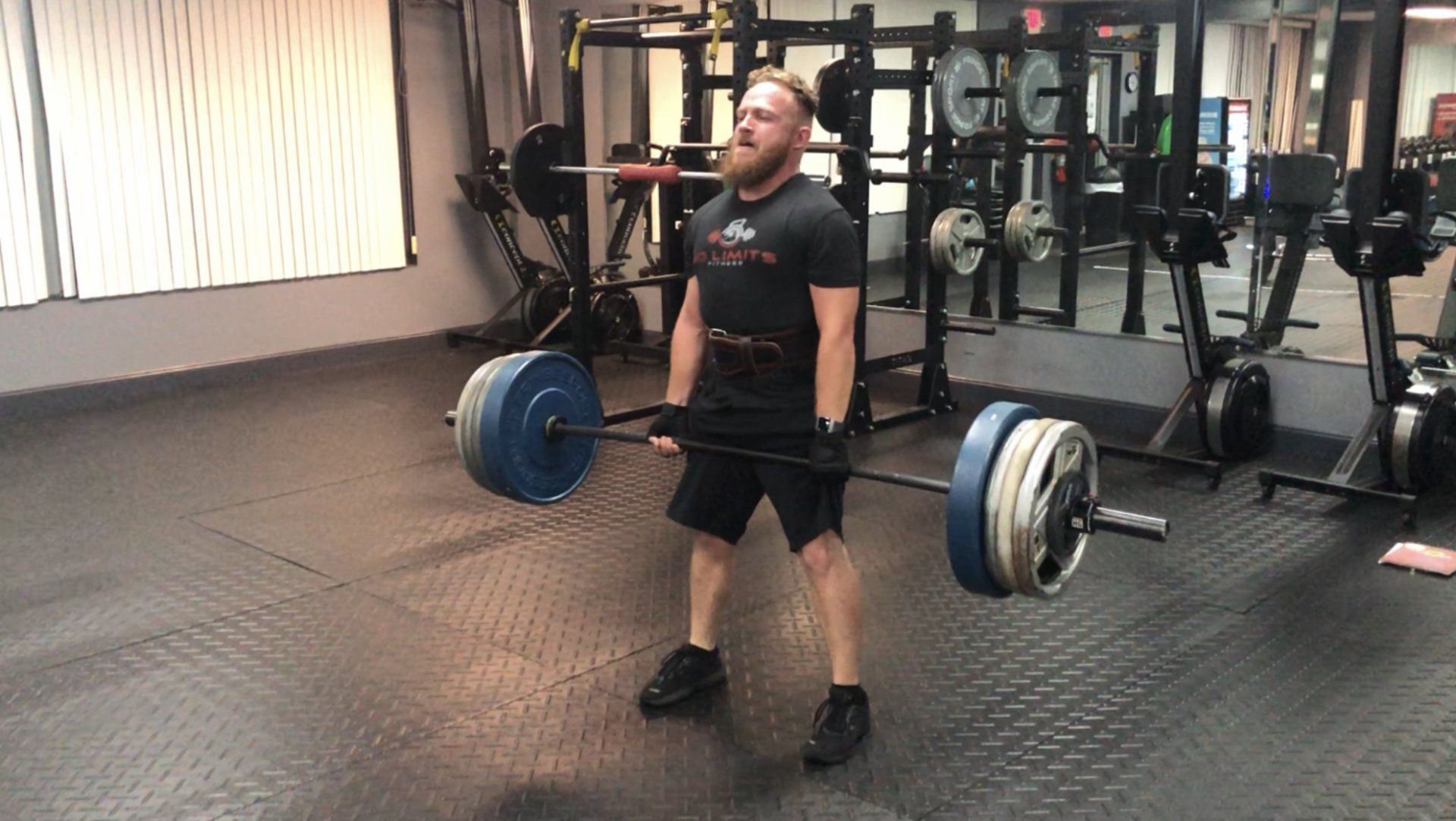One Rep Max Calculator

Many training programs are based on a percentage of the One Rep Max of a given lift. However, we don’t believe there’s any need or benefit to attempting your 1RM to determine your maximal strength. We’ve helped hundreds of men and women significantly improve their strength (over 100 lbs in a lift) without ever attempting a 1RM.
Unless you’re a competitive powerlifter, you’re able to determine your maximal strength without testing your 1RM. This will also help you determine the effectiveness of your strength program. Professional weightlifters and powerlifters are extremely cautious about testing their 1RM and most of them only test their personal records (PR) in the most important competitions. For most professional lifters, they will only test themselves once or twice a year.
If your goal is to improve your strength but you aren’t a competitive lifter, why should you risk injury by testing your 1RM? Once you know your 2RM, 3RM or 5RM, you can accurately predict your 1RM to help in writing yo ur training program.
Below is our 1RM Calculator based on the formula provided by Jim Windler’s 5/3/1 program (rounded to the nearest 5 lbs).
1RM Calculator
| % of Max | 75% | 85% | 92.5% |
|---|---|---|---|
| Weight | - | - | - |
| Ideal Rep Range | 3-5 | 2-3 | 1-2 |
The above rep ranges are from PlanStrong and will help you build strength without excessive soreness. The goal is to leave something in the tank so you can perform at a high level for the next set. In this approach, we don’t advocate training to failure.
However, there are multiple training programs that are based on your 1RM such as the popular 5/3/1 from Jim Wendler.
Your 5RM is approximately 85-87% or your 1RM.
Your 3RM is approximately 87.5-90% of your 1RM.
Your 2RM is approximately 90-92.5% of your 1RM.
The higher the RM (Rep Max) you’re using, the less accurate your predictions will be for your 1RM. The margin of error increases as the number of reps in the RM increase.
For example, your 10RM is approximately 70-75% of your 1RM.
If your RM has improved on a certain lift from 10 to 15 reps, you may have improved your strength-endurance but your 1RM may still be the same. We don’t recommend using a RM above 5 or 6 to determine your 1RM or to see if you’ve improved.
The relationship between your 1RM and a high RM isn’t reciprocal. If you’ve improved your 1RM, you can feel confident that your 15RM has improved as well…but not the other way around.
Training with kettlebells may pose an issue due to the large jumps between bell sizes. For example, an athlete may be able to press a kettlebell for multiple reps without being able to complete a single rep with the next bell size. In such an instance, the athlete must determine how far he/she is from being able to press the heavier bell based on the number of reps completed with the lighter bell.
About No Limits
No Limits Fitness provides step-by-step programs to help busy adults get the body they’ve always wanted, without restrictive diets or time-consuming workouts, so they can lead more fulfilling lives. Life is a much better experience in a strong, healthy body!
Recent Posts



Luci
Doug
Tasha
No Limits Fitness helps busy professionals lose weight, get stronger and have more energy so they can lead the lives of their dreams...even if they've tried before and failed.
SERVICES
CONTACT INFORMATION
All Rights Reserved | No Limits Fitness | Privacy Policy
